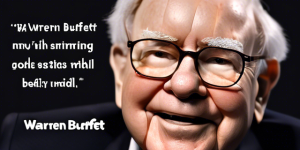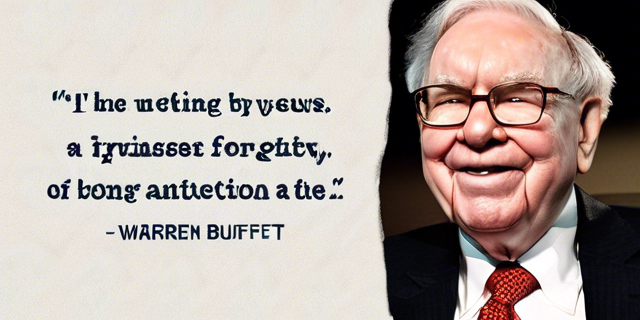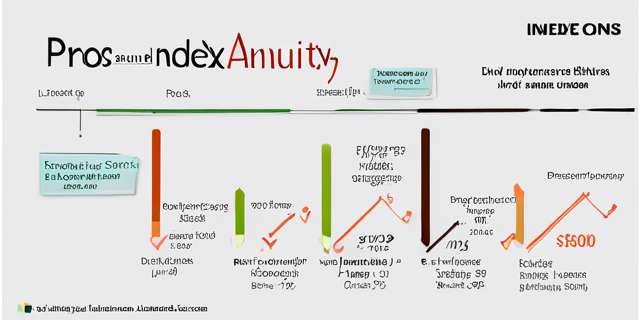Investment Philosophy and Portfolio Lessons from Warren Buffett

Widely considered one of the greatest investors of all time, Warren Buffett has shared endless insights on building wealth over decades managing Berkshire Hathaway. But what core principles guide his investing philosophy? How did he build his mega-successful portfolio of stocks and companies from the ground up?
This deep dive explores Warren Buffett’s investment strategy, stock-picking criteria, portfolio management advice, biggest wins and lessons learned to model in your own financial future. Let’s uncover the sage wisdom!
Buffett’s Core Investment Philosophy
Warren Buffett’s strategy roots back to fundamental bargain hunting for undervalued stocks with good fundamentals, then holding for the very long run. His core tenets include:
- Focus on Intrinsic Value – Determine where price deviates below true business worth.
- Invest in What You Know – Leverage your personal circle of competence for insight.
- Tune Out Market Noise – Make informed decisions immune to volatility and sentiment.
- Remain Patient – Hold companies for decades, not days or months.
- Stick to Proven Principles – Consistency, discipline and rationality breed success.
This value-focused, level-headed approach placed big bets on companies like Coca-Cola, American Express and Geico early on that drove his enduring prosperity.
Warren Buffett’s Timeless Portfolio Lessons

Beyond core philosophy, what specific portfolio management lessons can be learned from how Buffett built his empire to achieve such outliers returns?
- Go Against the Grain – Buy when markets panic; retreat when greed takes over.
- Diversify Across Sectors – Build a holistic portfolio not concentrated in just 1-2 sectors.
- Prioritize Bargain Prices – Buy stocks with P/E ratios below market average.
- Reinvest Dividends – Let compounding work its magic over decades.
- Ignore Short-Term Pain – Ups and downs today pale long-term.
- Maintain Cash Reserves – Hold liquidity to seize deals during downturns.
- Know When to Quit – Sell declining performers dragging overall returns.
Integrating even some of these evergreen portfolio techniques hands you an investing roadmap to excel similarly.
Buffett’s Evolution From Cigar Butts to Blue Chips
Early on, Warren Buffett followed more of a “cigar butt” investing strategy – buying shares of troubled companies at deep discounts then selling quickly after short upswings. But over time, his style evolved…
In the 1950s/60s, Buffett chiefly targeted battered “cigar butt” stocks, netting rapid 30-50% gains when they rebounded to fair value, then selling. This shorter-term, net current asset value (NCAV) approach proved lucrative fixing companies like Dempster Mill Manufacturing and Sanborn Map.
But after buying a struggling Berkshire Hathaway textile company, Buffett realized owning the whole business delivered far greater long-range profits than temporarily going long/short shares.
By the late 1960s, he shifted to buying quality companies like National Indemnity Insurance and See’s Candy to hold forever. Coca-Cola, Gillette, American Express and the Washington Post followed through the 80s/90s as Buffett focused his “economic moat” investing lens on premium blue chip brands.
This evolution from deep value plays to world class businesses formed the backbone of today’s formidable Berkshire portfolio.
Warren Buffett’s Stock Picking Criteria and Methods

When assessing companies, Buffett considers both quantitative factors like financial metrics alongside qualitative aspects like brand value and management strength. His analysis framework includes:
Financial Performance
- Earnings Growth – Rising profits year-over-year?
- Return on Equity – Generates adequate returns on capital?
- Profit Margins – Maintains robust margins?
- Debt Levels – Conservative balance sheet leverage?
Valuation Multiples
- P/E Ratio – Below respective industry averages?
- PEG Ratio – Accounts for projected growth?
Competitive Advantages
- Brand Power – Trusted household name?
- Pricing Power – Ability to raise prices without demand drop?
- Switching Costs – High barrier to lose customers?
- Efficient Scale – Dominates market share allowing lower costs?
This meticulous scrutiny ensures buying high quality companies without overpaying…the ultimate formula!
Classic Warren Buffett Stocks: Coca-Cola, American Express, Apple

Among Buffett’s hundreds of stock picks over the years, a select few represent his strategy beautifully. Let’s examine portfolio gems like Coca-Cola, American Express and Apple showcasing different aspects of his investing chops:
- What Buffett Liked – Beloved global brand, pricing power, ever-growing unit volume
- Stake Size – Initial $1.3 billion stake in 1988 now 400 million shares
- Returns – Nearly 20% annualized 30+ years through dividends & value expansion
- What Buffett Liked – Trusted high-end brand with customer loyalty
- Stake Size – $1.3 billion position built over 60s/70s
- Returns – 40X growth on initial $13 million investment
- What Buffett Liked – Wide user ecosystem, recurring service revenue, brand allure
- Stake Size – Whopping 5.4% ownership stake worth $120 billion
- Returns – 5X return just since 2016 aided by buybacks
The combination of strong qualitative brands buffered by solid financials created the perfect storm for exponential returns.
Biggest Successes
While Buffett has notched numerous lucrative investments, these particular success stories represent his most momentous portfolio triumphs:
See’s Candies
- Initial Stake – $25 million in 1972
- Peak Valuation – Worth $2+ billion today
- Key Drivers – Brand affinity & pricing power
Coca-Cola
- Initial Stake – $1 billion by 1989
- Peak Valuation – $200+ billion stake today
- Key Drivers – Global product dominance
Geico Insurance
- Initial Stake – $48 million in 1976
- Peak Valuation – Over $30 billion entity
- Key Drivers – Direct-to-consumer innovator
Each delivers their own lesson about seizing companies with unassailable niche positions delivering insured profits year after year via strong competitive advantages.
Biggest Mistakes
While Warren Buffett’s track record dazzles overall, even successful investors drop the ball occasionally. Buffett’s biggest blunders include:
Berkshire Hathaway – Stubborn clinging to ever-declining textile business hampered performance for 20+ years before Buffett pivoted into insurance and other industries.
Tesco – Rare major foreign investment flamed out after accounting scandal caused $444 million write-down on overpriced UK grocer.
US Airways – Multiple attempts in late 80s/90s to rescue airline from losses failed before finally selling stake. Taught Buffett airlines face too many external variables making sustained profitability unattainable.
IBM – Initially touted for reviving hardware sales and cloud leadership but Buffett read tech shifts wrong, admitting “I was wrong” on this pick.
Buffett is the first to admit oversights, noting how mistakes offer invaluable lessons for future decision sharpening.
Investing Wisdom from Buffett’s Letters to Shareholders
For decades, Buffett has shared his evolving perspectives on markets, portfolios, and economies through annual letters to Berkshire Hathaway shareholders. Core insights over the years include:
1990s – Expounding Moat Investing
Introduced formal concept of firms protected by deep “moats” sustaining durable competitive edges.
2000s – Warning on Bubble
Sounded valuation alarm for internet stocks years before dot-com crash erased trillions.
2010s – Doubting Bonds
With yields so low, predicted “bonds should come with a warning label” jeopardizing fixed-income investors.
2020s – Ignoring Politics
“Never bet against America” summarizing continued faith country’s dynamism wins long-term over current issues.
Buffett’s shareholder letters remain must-read wisdom, expanding minds on the state of business, wealth, and optimal investing.
Constructing a Buffett-Style Portfolio
The best way to take advantage of Buffett’s philosophy is modeling your own portfolio of stocks, bonds, and funds after his approach:
1) Ensure a Solid Core of Index Funds
Just like Berkshire holding company structure, build from broader market base up.
2) Complement with Individual Value Stocks
Pay discounted prices for quality names poised for growth.
3) Hold Position Sizes Equally
Avoid concentration risk skewing success to just 1-2 picks.
4) Reinvest All Dividends for Compounding
Let time amplify initial capital using corporate payouts.
5) Hold Stocks Long-Term
Allow years for value to appreciate minimizing transaction fees/taxes.
Blending prudent diversity amongst value stocks and funds begets improved risk-adjusted returns.
In Conclusion
Warren Buffett’s immense investing success clearly traces to a disciplined philosophy of buying great companies at bargain valuations, allowing them to compound greater wealth over many years or decades. Tax-efficiency also mattered greatly to his overall net worth creation.
Making rational choices during times of over-exuberance or anxiety separates the novice and expert investor. Patience to hold quality names for long horizons serves as perhaps Buffett’s greatest edge and lesson for traders today still obsessing over short-term noise.
While few will ever match the performance or longevity of Buffett’s career, by integrating many of his stock selection criteria, portfolio balance practices and conviction to go against the grain, individual investors stand to reap significant rewards.
The Warren Buffett portfolio blueprint for unfathomable returns exists for anyone willing to take a long view owning future-forward businesses avidly serving customer needs decade upon decade. The time to start investing like Buffett is now!
FAQs
Q: What was Warren Buffett’s first stock investment?
A: At 11 years old in 1942, Warren Buffett purchased shares of Cities Service preferred stock putting over $100 of savings to work. He sold too soon for a small profit against his sister Doris’ advice, learning a valuable lesson about patience.
Q: How many stocks are in Warren Buffett’s portfolio?
A: Berkshire Hathaway holds over 50 total stocks & companies in its portfolio as of 2023. Major listed stock holdings span Apple, Coca-Cola, Chevron, Activision Blizzard, HP, Visa, Charlotte’s Web and more alongside wholly-owned firms like GEICO, NetJets, Precision Castparts, Fruit of the Loom and others.
**Q: What was Warren Buffett’s biggest loss?
A: Warren Buffett’s biggest dollar loss came from a steep plunge in Tesco shares after Berkshire invested $2.3 billion in the struggling UK grocer. Accounting issues brought his nearly 5% stake down over 50%, resulting in almost a half billion dollar write down before selling out the position. Dodge & Cox shares blame in recommending the doomed investment.
Q: Who will inherit Warren Buffett’s stock portfolio after he dies?
A: The vast majority of Warren Buffett’s Berkshire Hathaway shares will be donated to various charities per his wished negotiated trust disbursement. Specific amounts are not fully publicized but Bill & Melinda Gates Foundation is known to be a major beneficiary along with his own Buffett Foundation as well other family trusts.
Q: Did Warren Buffett invest in cryptocurrency before his death?
A: No. Warren Buffett never invested directly into any cryptocurrencies like Bitcoin before his death though he changed his tone slightly in later years. His long held skepticism of the asset class deemed it too speculative without much tangible value. But Buffett did eventually dabble indirectly through a fintech venture bet and some blockchain plays by portfolio companies.










Thanks for sharing. I read many of your blog posts, cool, your blog is very good.